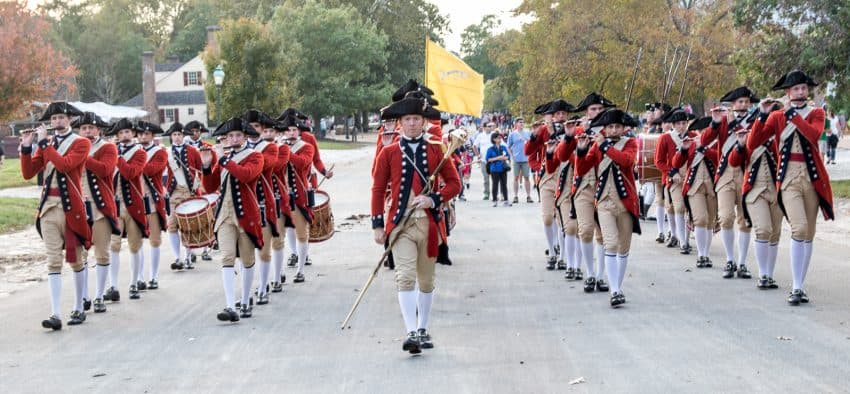
What I Learned in the Year 1781
By Don Blodger

On October 10, 1781, as we were preparing to drive to Jamestown, Virginia, my wife wondered if we could postpone leaving Williamsburg because “George” was coming to town within the hour.
She continued with a smile, “George is addressing the troops at 9:45 this morning and I really want to hear him…we may never get another chance.”

George, of course, was none other than General George Washington and he did, in fact, address his troops at Williamsburg, Virginia on that morning of October 10, 1781, before marching on the British and the victorious battle of Yorktown.
Fortunately, we were able to see Washington arrive on horseback with his men at his side, delivering that impassioned speech on the courthouse steps in Colonial Williamsburg — the world’s largest living history museum.
We had eagerly anticipated our one day in Colonial Williamsburg, and it wasn’t because we were history buffs — it was because we were not. We were fairly certain we knew who won the war with the British, but we were vague on many other details.
After a forty-year separation from California’s requisite American History requirement, we were now hungry to fill the knowledge gap on the American Revolution.
The Restoration
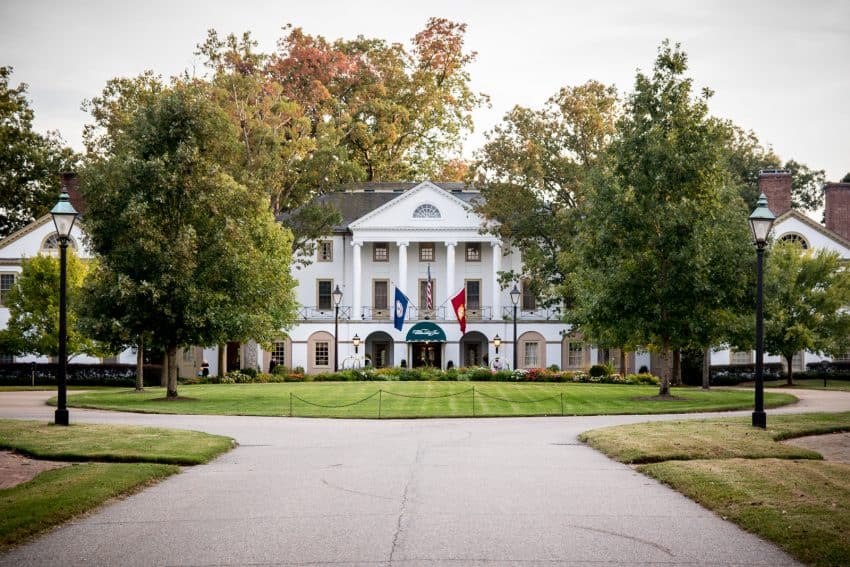
Williamsburg became Virginia’s capital in 1699 and remained the seat of the state government until 1780.
As the revolution was winding down, the collapsing tobacco economy and a dwindling population were but a couple of reasons this Revolution City lost its energy. The capital was then moved to Richmond.
We arrived the first day in time for the noon prayer service, held daily at the Bruton Parish Church. This church, a Williamsburg landmark on Duke of Gloucester Street, has been holding services since 1683.
As we sat quietly in the front box of pews, we gazed at the history surrounding us but our minds wandered. We knew George & Martha Washington attended this church – so where did they sit?
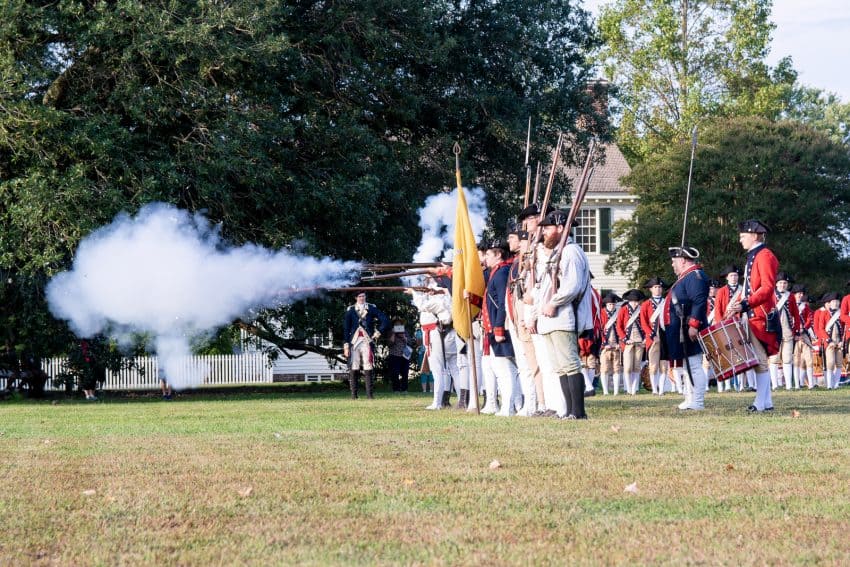
Reverend W. A. R. Goodwin became the pastor of this church in 1903, and it was his passion and vision to restore Williamsburg to its former glory, which led to his persuading John D. Rockefeller to pay a visit.
Mr. Rockefeller agreed to fund the project but wanted more than just preserving a few buildings. He wanted to include the entire town, along with recreating and interpreting life in this Revolution City. He imagined a living history museum.
And so, in 1926, this monumental undertaking and the detailed historical research began and continues even today.
On one of the side streets, we came upon a small vacant lot between two shops. It was roped off and a few people were on their knees digging in the dirt. We asked the woman who appeared to be in charge of what they were doing, and she described their excitement at having just found what looked like a button from a child’s garment from the late 1700s.
Where to Start
Colonial Williamsburg’s Historic Area can be overwhelming, especially if you only have a day or two to visit. I highly suggest you have two items always close at hand: a map and the schedule of the day’s events. Take a look at the events that interest you and then determine where you need to be when.

A note about admission tickets: You do not need to purchase an admission ticket to enter the historic area and walk the streets.
However, an admission ticket will give you access to the art museums, tours of the Capital and Governor’s Palace, a shuttle service and entrance to more than 20 practicing trade shops. A single-day ticket costs $40.99 for adults and $20.49 for youth (6-12) and is free for under 6 years of age.

We started our day with a tour of the Governor’s Palace at 9:00 am, wanting to get a jump on the crowds and, as it turned out, it was also a good way to get a broad overview.
We then browsed the two art museums, viewing a wonderful display of period paintings and furniture, along with artifacts of daily life from all walks of colonial life, rich and poor, free and slave.
>Next up was the Public Hospital of 1773. The official name was the “Public Hospital for Persons of Insane and Disordered Minds,” and it was the first hospital of its kind in North America. Think prison with a dash of the torture chamber.
Mental illness was viewed at the time as either a moral failing or a conscious choice and, therefore, could be altered with just the right motivation – from the likes of bloodletting, cold bath dunks and, later, electric shock.
Walking Alongside History
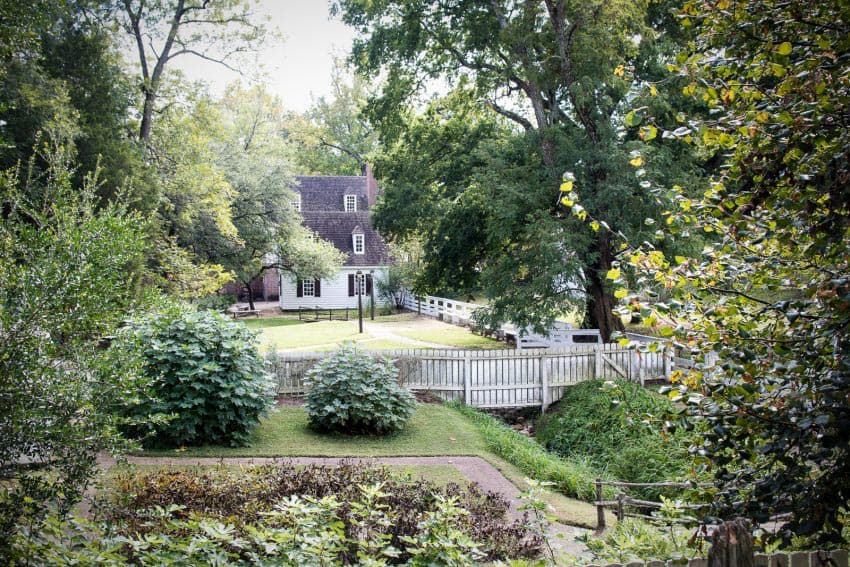
However, it wasn’t until we were in the center of town, on Duke of Gloucester Street close to the Market Square, that we finally understood. It was then that Colonial Williamsburg began to unfold and truly come alive as a spectacular one-of-a-kind living history museum.
Two men approached us in what appeared to be authentic late 1700’s attire and asked if we could settle a dispute. It had something do to with property lines, family history, and laws in a nearby town and, since we were at a complete loss on legal matters in the year 1781, they moved along down the street.
We entered the shoemaker’s shop and, while pounding and stretching the leather, he spoke of the challenges he was currently facing in the shoe business, especially during the last couple of years of the war with the British.
We walked past the militia’s encampment and, between the rows of tents, we watched the women and children carrying supplies and setting up the outdoor kitchen, preparing to cook dinner on an open fire.
There was an argument between two families and some of the townspeople in the middle of the street for all of us to hear. They were passionately putting forth their beliefs on whether or not a young couple should marry, as the young man was deciding between doing his duty by going to war or staying behind with his new bride.
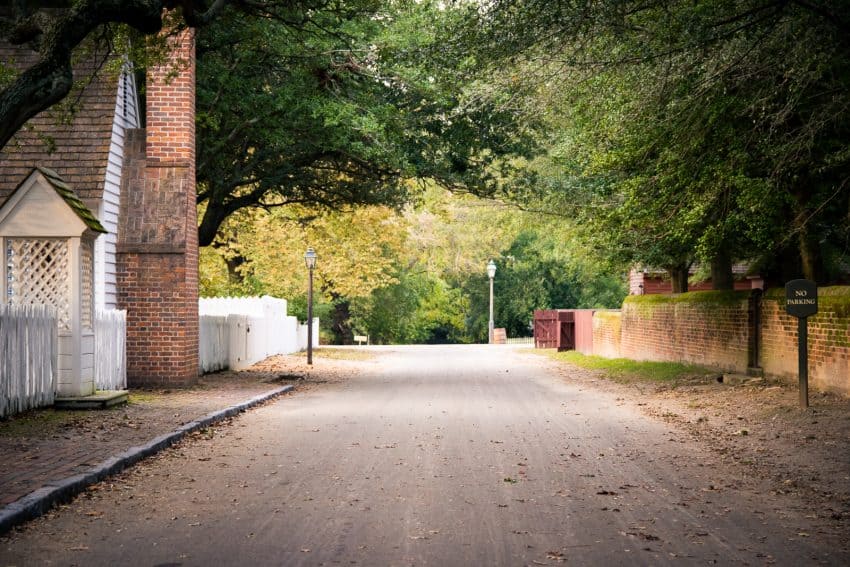
Later that day, on the open fields a few blocks from the center of town, we watched the French Aristocrat and Major General, simply known as Lafayette, shout commands from horseback as he prepared portions of the Continental Army and the local militia for the upcoming battle at Yorktown.
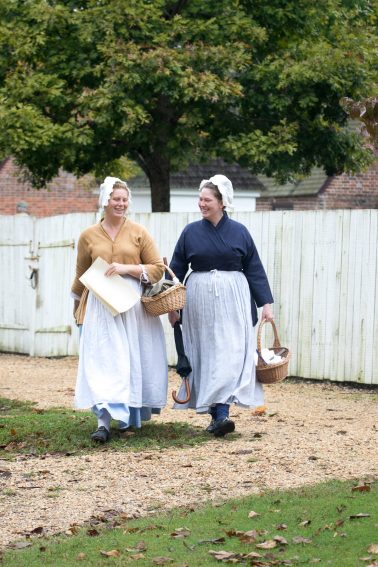
Dinner and a Witch Trial
It had been a full and exhausting day in 1781 Colonial Williamsburg, but we still had two more events ahead of us: dinner and a witch trial.
We made reservations months in advance to eat at Christiana Campbell’s Tavern, one of the four historic dinner establishments. We chose Christiana Campbell’s Tavern because it is known for its excellent local seafood, along with being George Washington’s favorite restaurant in the area.
When we arrived, Christiana was sitting at the entrance, greeting her guests and, after some polite pleasantries, we were guided to our table upstairs in a warm and cozy dining room lit only by candles. (Remember, it’s 1781).
After a wonderful 18th century dinner, we walked to the building where we had the honor of serving on the jury in a reenactment of the only witch trial on record in Williamsburg. The accused was named Grace Sherwood and, although today this kind of trial seems unimaginable, when the actual laws of Virginia at that time were explained, this poor woman’s guilt or innocence was not easily determined. I personally voted not guilty, but others did not. I do not want to give any more away, but I highly recommend attending and serving at Cry Witch.
Along with Cry Witch, there were numerous other special events and reenactments throughout the day and evening, some of which required advance reservations. Be sure to check the schedule ahead of time.
Historic Dining and Accommodations
The dining and accommodations in and around Colonial Williamsburg can be grouped into two primary sections: inside the historic district and outside the district, which would include the town of Williamsburg, VA. In general, the closer you are to the historic district, the more expensive but also the more authentic.

Within the historic district, there are four historic taverns offering food you would have seen in the late 18th century. These include Shields Tavern, Kings Arms, with a chophouse menu, Chowning’s Tavern, a colonial-inspired pub, and Christiana Campbell’s Tavern. Other more grab-and-go eateries in the center of town include Raleigh Tavern Bakery, McKenzie Apothecary and Dubois Grocer.
Sleeping accommodations are also plentiful in and around the historic area. The most beautiful and elegant is the 5-star hotel, Williamsburg Inn. For something a little more historic and closer to the center of town, but with modern amenities, are the many beautifully maintained colonial houses. These homes range from a two-bedroom house for a large family to a small room in one of the taverns or a one-room house with lush gardens just a block from Duke of Gloucester Street.
Vowing to Return
We only spent one full day in Colonial Williamsburg, but it was an amazing day and one which we relive frequently in our memories. Upon arriving we really did not know what to expect, perhaps because in California we are not surrounded by much American history but, for whatever reason, that day in October 1781, clearly exceeded anything we could have imagined.
We look forward to returning and anticipate that we will experience some other day in the late 18th century in our country’s Revolutionary City.
Colonial Williamsburg
Colonial Williamsburg Regional Visitor Center
101-A Visitor Center Drive
Williamsburg, VA 23185
(855) 233-1437
Williamsburg Inn
136 Francis Street East,
Williamsburg, VA, United States
(855) 231-7240
www.colonialwilliamsburghotels.com
Colonial Houses
www.colonialwilliamsburghotels.com
Colonial Williamsburg Dining
www.colonialwilliamsburghotels.com/dining
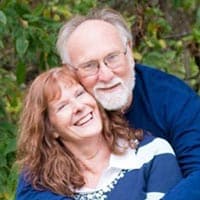 Don Blodger is a freelance photographer and travel writer and lives in Rocklin, California with his wife, Victoria. Visit his photography website at donblodgerphotography.com
Don Blodger is a freelance photographer and travel writer and lives in Rocklin, California with his wife, Victoria. Visit his photography website at donblodgerphotography.com
- Montreal’s Breweries Await Your Thirst - May 7, 2024
- Mother’s Day Ideas - May 6, 2024
- Exploring Kenya’s Night Markets - May 3, 2024

